Marco Cuba-Ricsi is no stranger to the difficulties of the immigrant experience. In fact, his knowledge is as intimate as it gets; the multimedia artist left his native Peru for the U.S. at age 20.
“When I came to this country for the first time, I felt lost, without a place to go or where to share my art, my ideas, my projects and desires with other Latino or Hispanic artists like me,” he recalled.
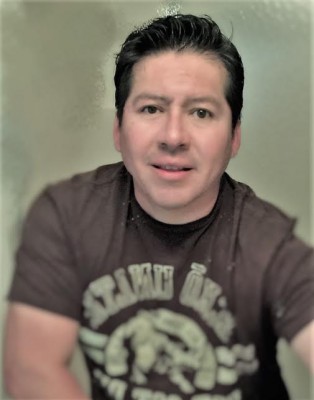
While that certainly was not the time for a young newcomer to take action that would help remedy the situation for others, Cuba-Ricsi was ready to undertake what he called “probably the project of a lifetime” about a quarter-century later. “The idea of having a place, an organization, or a house for Latin American artists slept for many years on my agenda of things to do,” he said, and after three years of preparation, in March 2015, he launched The Latino Art League (TLAL) of Greater Washington D.C. The group started out with five members; now it has 29, including artists from Argentina, Bolivia, Chile, Colombia, Puerto Rico, Cuba, Venezuela, Peru, Uruguay and the U.S.
For the second consecutive year, in commemoration of Hispanic Heritage Month, the City of Gaithersburg invited the league to show its work from Aug. 26 to Oct. 16 at the Activity Center at Bohrer Park. Curator Jaree Donnelly, responsible for designing and hanging the exhibit, said viewers loved the vibrancy of last year’s exhibit. “It goes well with the season—beautiful, bright and joyful.”
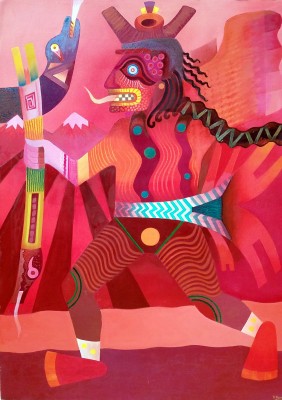
“We are celebrating the group’s diverse talents,” said Cuba-Ricsi, “introducing the artwork of members who live outside our borders…(including) pieces that came directly from Peru for this show,” as well as work by members who joined TLAL in the past year. Most of the work is done in acrylic, oil or mixed media, he noted.
Cuba-Ricsi considers himself a full-time artist, working in both painting and photography, and teaching private classes in drawing and painting. For TLAL, he serves as director, which involves “coordinating shows, presenting our organization in public places and galleries, or contacting new venues.” Fluent in Spanish, English and Portuguese, he also does bilingual interpretation.
His artistic proclivities, according to his mother, were clear from age 2 when he “was always painting on the walls, papers, magazines,” and he would draw animals, flowers and people with his grandmother during weekly visits. About the experience of seeing Salvatore Dali’s painting “Christ of St. John of the Cross” at the Museum of Art in Lima, Peru, when he was 9, he said, “It was at that moment that I decided I wanted to become an artist. I had that image in my mind for weeks.” By age 14, he had “read all the books about the Dada movement and seen the work of the surrealist artists,” but still Dali prevailed as his role model. “I was sure that Surrealism would serve me as a bridge, as an excuse. It would be the tool that would open the door to my inner world of visions, absurd creativity and latent ideas.” By “absurd,” he clarified, “I mean the fact that most of my creations, paintings, collages and drawings look illogical, unreasonable to the eyes of the observer. I always use symbolism in my pieces, ideas represented by objects, animals, people or things.”
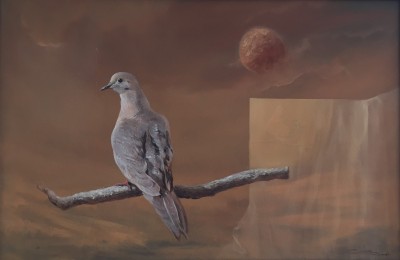
Formal classes at the museum began when Cuba-Risci was 15. Four years later, he was admitted to the Peruvian School of Fine Arts where he took classes in drawing, painting, sculpting and art history; he also studied graphic design at Jose Sabogal (technical institute).
In conjunction with his belief “that the life of an artist is an eternal work in progress,” Cuba-Risci’s art has changed through the years. During art school, he explained, “I was focused on the automatism (involuntary). I worried more about demonstrating the latent creativity of my personality. …I was obsessed with mastering the technique of classical painting and incorporating it into my creations.” In essence, he had to admit his work “had a very strong and direct Dali influence.”
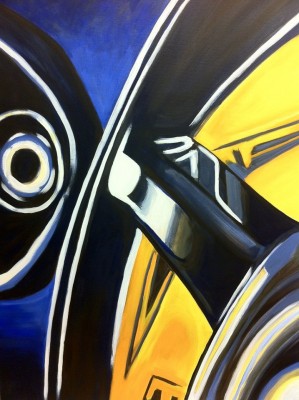
Moving to the U.S. “began a voluntary period of desolation and isolation that was strongly reflected in my paintings,” he observed. “My maturity and mastery of technique and color grew.” But “life as an immigrant” prevented his from completing his formal education and “tormented me in silence, but marked the beginning of my modern stage. All I wanted was to paint, and I dedicated myself to do it with anything that came into my hands.”
The artist proceeded to explore on his own, and his “perception of modern art changed with time, and abstraction was incorporated slowly but steadily into my artwork.” Now, Cuba-Risci said, “experimentation plays a key role in my artwork. I still consider myself a modern surrealist, an artist who is always exercising his mind and setting free his creativity. My work is now richer in context and meaning. The automatism of my early years hasn’t stopped, but is executed with a more proper technique and elaboration.”
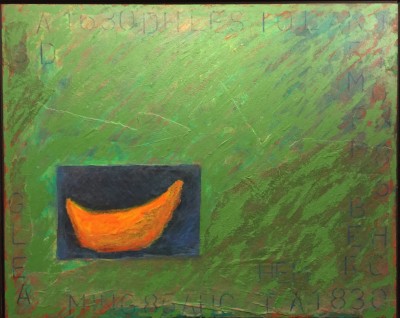
He views each of his works as “a window to my inner world and also a pictorial reflection about life, my experiences and my continuous evolution as an artist. Each element has an innate texture and artistic potential that inspires me and challenges me to think and recreate another reality”.
Cuba-Risci is well aware of “the importance of being part of the first Latino art league in our area. We are founders of something unprecedented, and we know the responsibility that this entails.” He plans to continue in his efforts as director to make the league grow larger and stronger “and in the right direction. … We will continue working in partnering with local government, galleries and new sponsors to create a much more varied and stronger calendar for upcoming years.” Other projects that involve education and cultural exchange, as well as the “the vision of having a place, a home for the Latino arts, are also on our agenda.”
For information on the Latino Art League, visit www.thelatinoartleague.org.